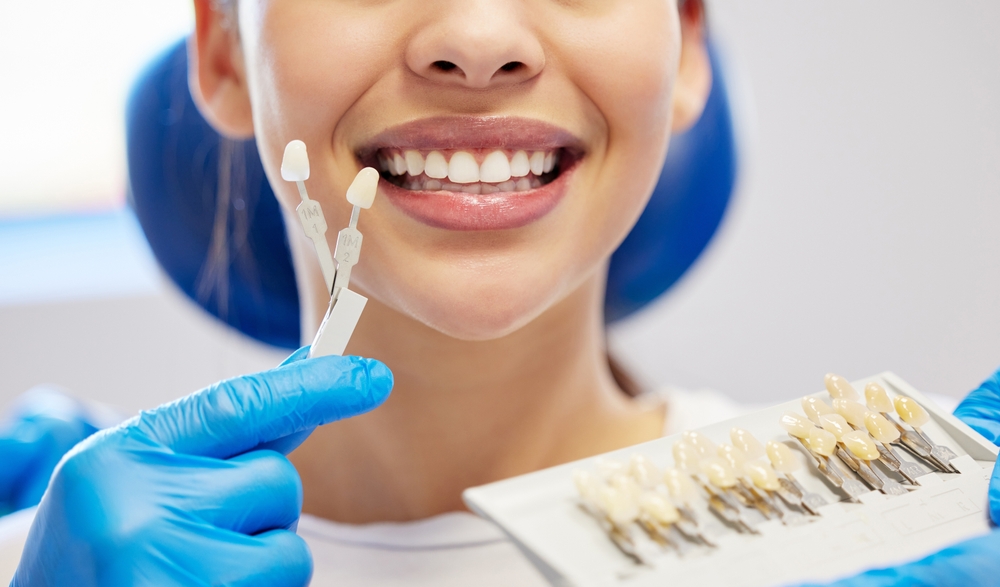Veneers have long been one of the most popular cosmetic dentistry treatments for creating a flawless smile. They can correct discoloration, chips, gaps, and uneven shapes, giving patients the confidence of brighter, more uniform teeth. However, one of the biggest concerns many people have is whether veneers require shaving down their natural teeth. The good news? Advances in dental technology have introduced options that allow for little to no alteration of your enamel, making veneers more conservative than ever before. In this blog, we’ll explore whether it’s possible to get veneers without shaving down your teeth, what alternatives exist, and which option may be right for you.
In This Blog:
- Understanding Traditional Veneers
- No-Prep and Minimal-Prep Veneers Explained
- Who Is a Candidate for No-Prep Veneers?
- Comparing Results: Do No-Prep Veneers Look as Natural?
- Other Alternatives to Shaving Down Teeth
- What to Expect During the Process
Understanding Traditional Veneers
Traditional veneers are thin shells of porcelain or composite resin that are custom-made to fit over the front surfaces of your teeth. To ensure they bond properly and don’t look bulky, your dentist usually needs to remove a small amount of enamel from each treated tooth. This process, sometimes called “tooth shaving” or “preparation,” creates space for the veneer to fit naturally and securely.
While this approach has been used successfully for decades, it is not without drawbacks. Enamel removal is permanent, meaning once a tooth has been prepared for a veneer, it will always require some type of restoration. For many patients, this raises concerns about long-term tooth health and sensitivity. That’s why newer options, such as no-prep and minimal-prep veneers, have become so appealing.
No-Prep and Minimal-Prep Veneers Explained
No-prep and minimal-prep veneers are advanced alternatives designed to preserve as much of your natural tooth structure as possible. Instead of removing a significant layer of enamel, these veneers are made from ultra-thin porcelain or composite materials that can often be placed directly on the teeth with little to no reduction.
- No-Prep Veneers: These are the thinnest option, sometimes compared to contact lenses for your teeth. They can be bonded directly without drilling in many cases.
- Minimal-Prep Veneers: These may require a very slight reshaping of the enamel, but far less than traditional veneers, making them a more conservative choice.
The benefits are clear: less invasive, faster treatment, and preservation of your natural teeth. Patients also appreciate that the process tends to be more comfortable and, in many cases, reversible if only minimal adjustments were made.
Who Is a Candidate for No-Prep Veneers?
No-prep and minimal-prep veneers aren’t right for everyone, but they can be an excellent solution for many patients. The best candidates are those with:
- Minor discoloration that whitening cannot correct
- Small gaps between teeth
- Slight chips or cracks
- Teeth that are naturally smaller or slightly worn down
However, patients with more severe issues, such as large gaps, significant crowding, or very dark stains may still benefit more from traditional veneers or other cosmetic treatments. Because every smile is unique, a thorough consultation and evaluation with a cosmetic dentist is the best way to determine if no-prep veneers are the right choice for you.
Comparing Results: Do No-Prep Veneers Look as Natural?
A common question patients have is whether no-prep veneers look as good as traditional ones. Thanks to modern materials like ultra-thin porcelain, no-prep veneers can look just as natural and radiant as their traditional counterparts. They reflect light in a way that mimics real enamel, blending seamlessly with your natural teeth.
In terms of durability, no-prep veneers are strong and long-lasting when cared for properly. That said, because they are thinner, they may not mask extremely dark stains as effectively as traditional veneers. For patients with mild to moderate cosmetic concerns, though, they can deliver stunning, natural-looking results without the need for significant tooth reduction.
Other Alternatives to Shaving Down Teeth
If you’re hesitant about veneers or not an ideal candidate for no-prep options, there are still other ways to enhance your smile without significant tooth reduction:
- Dental Bonding: A tooth-colored resin is applied and shaped directly onto your teeth to fix chips, gaps, or discoloration. It’s a quick, affordable option but not as durable as veneers.
- Teeth Whitening: For patients primarily concerned with discoloration, professional whitening treatments can brighten your natural enamel without adding any material to the teeth.
- Orthodontic Treatments: Clear aligners or braces can straighten misaligned teeth, sometimes eliminating the need for veneers altogether.
- Enamel Microabrasion: A conservative cosmetic treatment that removes very superficial stains and imperfections.
Each alternative comes with its own benefits and limitations, which is why consulting with a cosmetic dentist is key to finding the solution that aligns with your goals.
What to Expect During the Process
Getting no-prep or minimal-prep veneers is generally simpler and faster than traditional veneers. Here’s what you can typically expect:
- Consultation: Your dentist evaluates your teeth, discusses your goals, and determines whether you’re a candidate for no-prep veneers.
- Impressions or Scans: Digital scans or molds are taken to design veneers that fit precisely over your teeth.
- Fabrication: Your veneers are custom-crafted in a dental lab from ultra-thin porcelain or composite.
- Placement: The veneers are bonded directly to the front surfaces of your teeth with minimal or no enamel removal.
- Final Adjustments: Your dentist polishes and perfects the veneers for a natural look and comfortable bite.
After the procedure, you’ll be able to enjoy your new smile almost immediately. With proper care like brushing, flossing, and regular dental checkups, no-prep veneers can last for many years.
Conclusion
Choosing the right type of veneers, or an alternative cosmetic option, is all about aligning your smile goals with what’s best for your enamel, long-term oral health, and budget. While traditional veneers usually require reducing some tooth structure, no-prep and minimal-prep options provide excellent results with much less alteration, and in many cases preserve healthier, more natural teeth.
If you’re wondering whether you’re a good candidate for no-prep or minimal-prep veneers, or if another treatment might better suit your goals, don’t settle for generic information. Schedule a consultation at Smile Drs. in Cromwell, CT. Your dream smile could be closer than you think!



